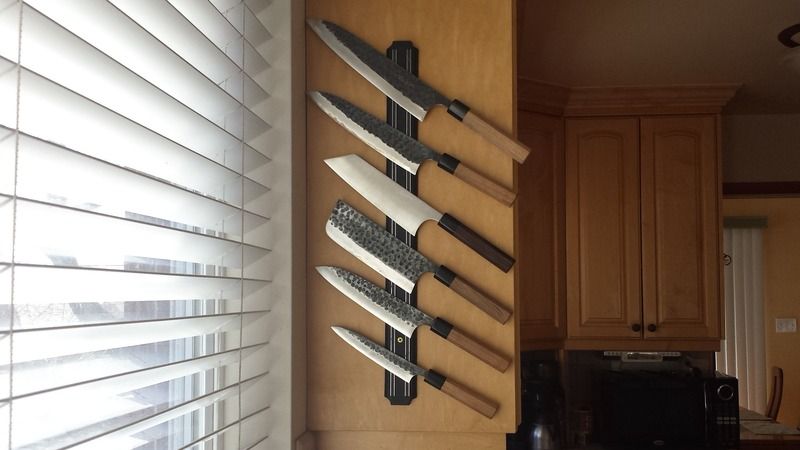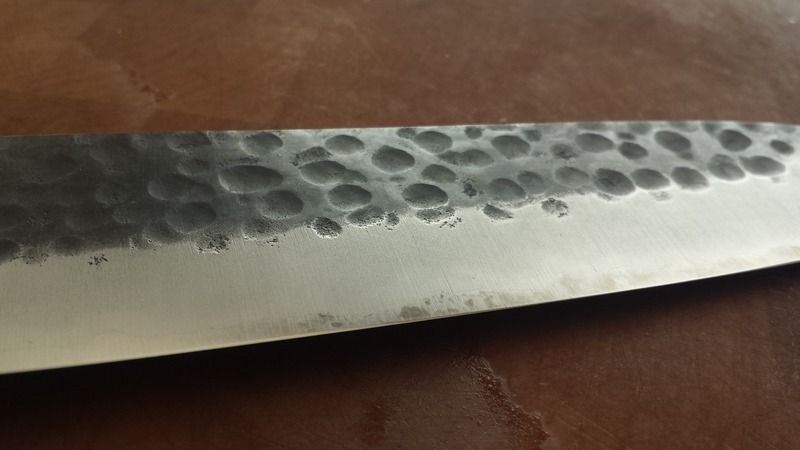Hi all,
I've had a cheap vg10 knife for a year now, which is fine for most cutting but it's edge retention is horrible, nearly same as my zwillings but without the option to be honed.
While searching for a new knife, the Masakage's caught my eye, both aogami and shirogami (both #2) series.
Now I was wondering: what is the practical difference between those steels?
I have found both are high in hrc, around 62/63, and both will be somewhat reactive as they are carbon steel.
Also, the aogami series is (way) cheaper than the shirogami series.
Any thoughts?
I've had a cheap vg10 knife for a year now, which is fine for most cutting but it's edge retention is horrible, nearly same as my zwillings but without the option to be honed.
While searching for a new knife, the Masakage's caught my eye, both aogami and shirogami (both #2) series.
Now I was wondering: what is the practical difference between those steels?
I have found both are high in hrc, around 62/63, and both will be somewhat reactive as they are carbon steel.
Also, the aogami series is (way) cheaper than the shirogami series.
Any thoughts?






